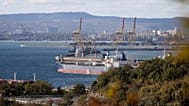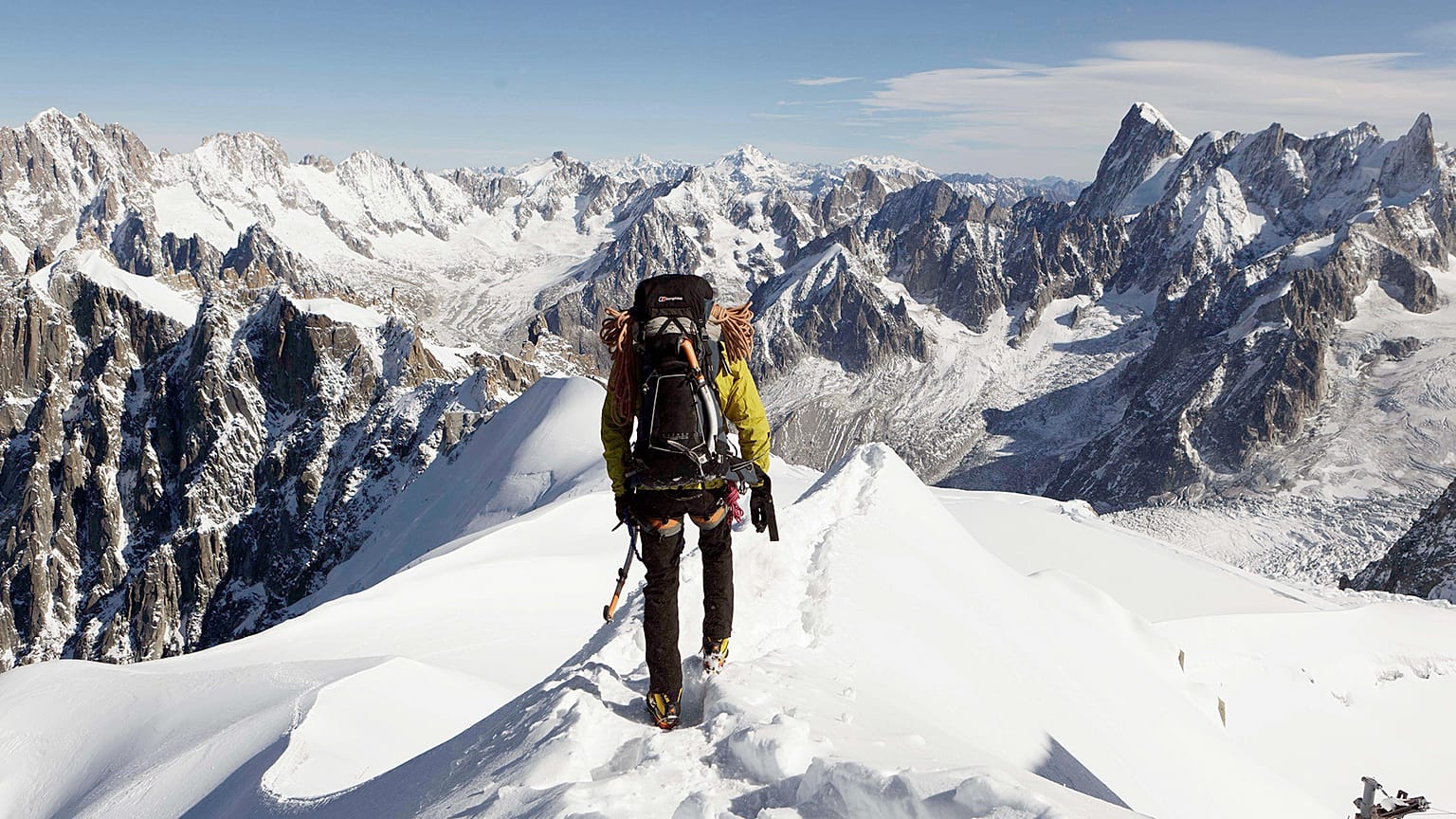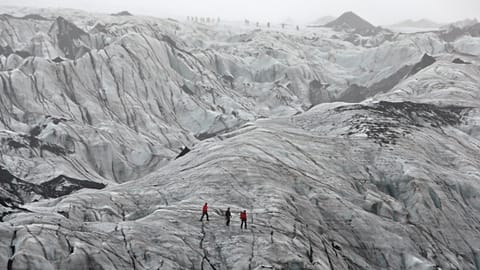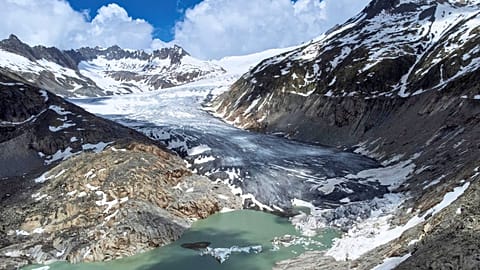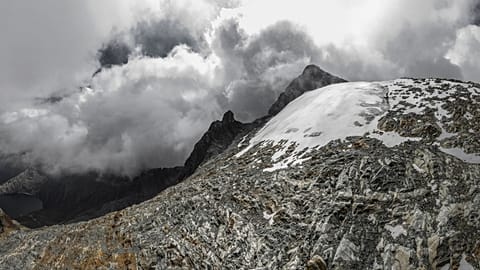A new Glaciorium climate and glacier interpretation centre will show the evolution of glaciers and our relationship with them.
Living in Chamonix, it's not easy to escape the fact that, over the last 10 years, the famous Mer de Glace has looked more like a sea of rubble than a sea of ice .
France's largest glacier and the second-longest in the Alps is losing six metres of thickness every year.
The glacier, also known as Montenvers, attracts thousands of visitors every year, with some 450,000 people coming in 2023, all eager to see this disappearing feat of nature.
Since last winter they have been able to see it up close, at an altitude of 1,913 metres, via a new cable car. In just two minutes, visitors are transported between the viewing platform and the ice below.
Onboard, they can admire the area's beauty, with its famous peaks, like the Grandes Jorasses and the Drus, that have enticed mountaineers for the past four centuries.
With the continuing glacier melt, the Compagnie du Mont-Blanc had to adapt to make it easier for people to get around and reach popular attractions, such as the glacier cave, which is carved out anew every year so people can see the glacier from the inside.
"It takes 10 minutes to get down to the cave, where it used to take much longer," said Stéphane Seux, Operations Director of the Compagnie du Mont-Blanc. "We only have a hundred or so steps, whereas before there were 600. This really changes the accessibility of the site."
Adapting to melting ice
The new cable car, which was built about 40 metres up the valley from the 1988 lift, is part of major works that have started on the Montenvers site.
The goal is to allow visitors to get high up in mountains while exposing them to the effects of climate change.
The restoration of the historical hotel and red Montenvers mountain railway is also part of the project.
A new Glaciorium climate and glacier interpretation centre will be constructed next year, scheduled to open in 2026. With interactive displays, the Glaciorium will chart the evolution of glaciers and our relationship with them.
Local glaciologist Luc Moreau has studied Chamonix’s glaciers since 1987. He said that in places, the glacier has lost 40m in four or five years.
For local mountain guides like Jérôme Stoessel, glacier retreat means he has to take clients further and further out to reach the part of the glacier where he can do training:
"We added a good twenty minutes for the walks. After that, as we got a bit further on, we had to (walk) even more on the Mer de Glace. Up to here, we can't really do our glacier trekking or technical work, we have to go much further upstream on the Mer de Glace."
The new gondola allows glaciologists like Moreau to observe the consequences of global warming at close quarters, even as it promotes local tourism.
Moreau points out that in 15 years, the glacier will have melted significantly.
'Last chance' tourism
Experts say the skiable part of the glacier will only be available for another 30 years at most and Moreau believes that by the end of the century, with the Alps warming faster than the rest of the world, all glaciers below 3,500 metres will be gone.
For now, he is still taking advantage of glaciers being here to tell people about them. "We're raising awareness as much as we can, talking to people about this environment that we owe it to ourselves to preserve," said Moreau.
Many visitors also appreciate that this could be their last chance to see them.
"We thought that by the end of the year, it wouldn't be here any more. That's why we took the opportunity to come. We know full well that in a few years, the landscape won't be the same," said one.
"We've realised that we're privileged and that it won't be here for much longer".

